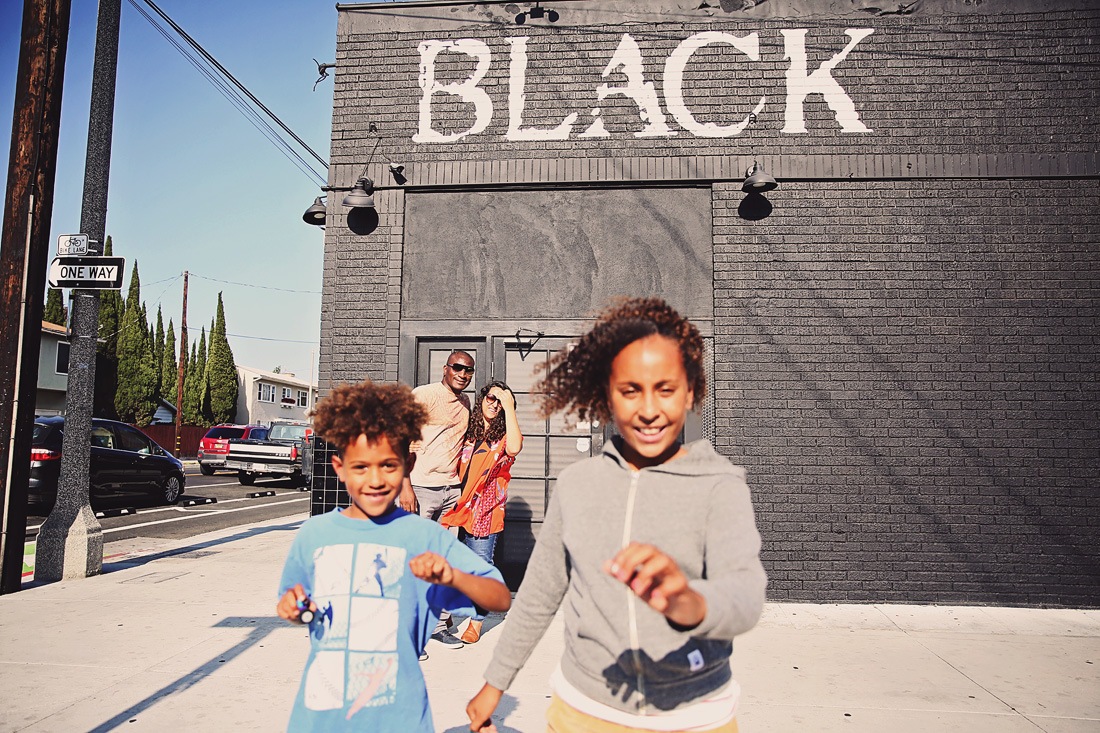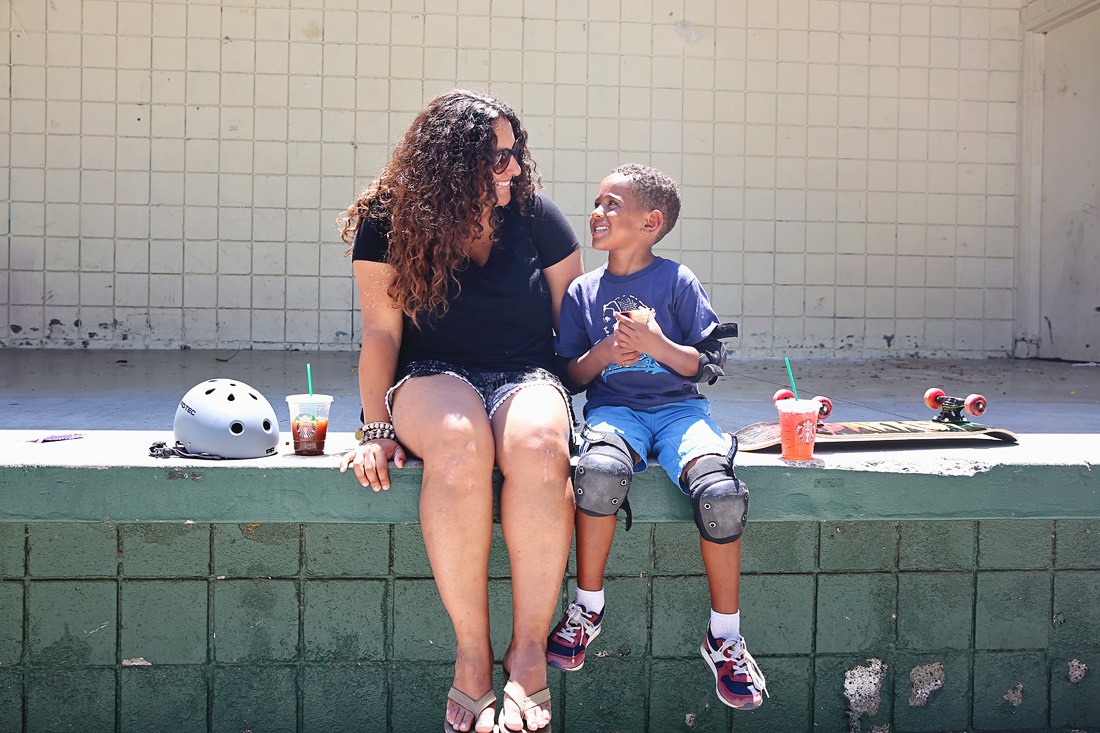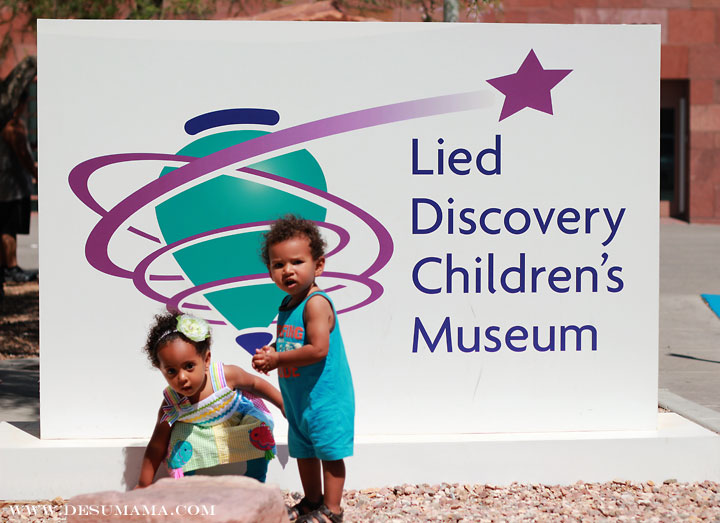Seems impossible, but that doesn’t mean I won’t try! My Brother and I are the first generations born in the States, with parents immigrating here in the 1960s with their parents as small children from Cuba. Spanish was technically my first language, not that it shows in the Spanglish I speak now. It’s a shame, really. I can understand essentially the entire language and can engage in basic conversation, but I would in no way consider myself fluent. English speaking people hear me speak Spanish and say, “Oh, you speak Spanish!!”, while Spanish speaking people would say, “Oh, you speak Spanish??”.
Having a foundation of knowledge in the language was not just a casual skill, however. My Grandparents (who were a BIG part of my upbringing) pretty much only speak Spanish. My Grandmother is probably reading this right now on her computer saying, “Vanessa, I know English!”. Sorry, Mami! Mami does, in fact, speak English. But the truth of the matter is, Spanish was {is} our family’s language of choice. You are kind of in the dark about most happenings if you can’t keep up with their fast-paced version of it.
So here we are, my husband and I, attempting to raise a bilingual child in a monolingual home. Can it be done? I am not too sure, but here is a list of tib bits that might help you reign the idea into practice:
How to Raise a Bilingual Child in a Monolingual Household
Determine your fluency goals. It will help you to determine the level of fluency you would like your child to achieve before taking on the task of language immersion. Do you want your child to recognize simple words and commands? Do you want them to build sentences? In the present tense? Past tense? Conjugate verbs? Again, this is assuming that you are attempting to expose your child to a language not regularly spoken in the home. I personally believe that knowing a second language will always be a valuable skill, in any level of fluency. Sure, I would love my children to exceed my level and become a fluent Spanish speaker by the age of five, but to keep the goal from overwhelming my efforts, our fluency goal is to just begin incorporating single words and very simple, two/three-word commands into her daily routine.
Utilize your resources: Spanish exposure has always been high on my motherhood priority list, I started my resource research when I was pregnant. My Spanish speaking family is all in California, so exposing Alina to the language would take some deliberate effort on my part. Since Alina will be too young for a school setting for at least another year, I was looking for a resource geared towards toddlers, in a Mommy and Me setting, but in Spanish! Seems straight forward enough. And wouldn’t you know it, Las Vegas kind of stinks when it comes to language outreach. However, if you Google “Los Angeles Spanish Mommy and Me” you will get a rather fun list of possibilities. It was clear I would have to come up with something on my own, and I am still in the brainstorming stage. For now, the only resource that we use consistently, but with remarkable results, is the foreign language development DVD series Little Pim.
Developed in 2006 by Julia Pimsleur Levine, a filmmaker and daughter of language professor Dr. Paul Pimsleur, Little Pim is a foreign language immersion DVD series for babies, toddlers and preschoolers. They also offer flashcards and other online learning resources. The series has won a plethora of awards, has been featured on The Today Show, and is available in Spanish, French, Chinese, Italian, Japanese, Hebrew, English (ESL), German, Arabic, and Russian.
Utilize your support network: As I mentioned, my Spanish speaking family is not in Las Vegas, but that does not mean they are not a huge help in depositing the language into my child’s ear. I speak to my family regularly and always have them on speaker so that Alina can chat with us. And the plan is to {one day soon!?} set up a Skype account. Alina also has the best Tias/Auntie I could ever ask for; they recognize my efforts and are wonderfully supportive. A few months back, her Tia V made a set of Latin music CD’s geared towards children. I took them out recently and, low and behold, Alina has salsa in her blood! She LOVES them! Tia V is also very good about getting Alina a mix of English and Spanish books to add to her library.
My honorary Cuban sister, Alina’s Auntie, does not speak Spanish, but has been exposed to the culture growing up and can dance a mean salsa and chow down on Cuban food with the best of us. She also does everything she can to reinforce the language. I love her ever more for that. Auntie will point to the light and tell Alina, “la luz!” or ask Alina for “un beso”. So don’t be quick to count out your loved ones that don’t speak the language! Ask them to support your efforts by identifying some words you are currently teaching your child. It takes a village, right?!?
And least I forget, if not native speakers themselves, make sure your mate is agreeable to the introduction of another language into the household. Daddy D is not fluent, but he did spend a couple of years playing professional basketball in La Paz, Mexico, so not only does he have an ear for the language, he is completely supportive and enthusiastic about Spanish in our home.
Stay consistent: Isn’t this the truth about anything we want to create a habit? Fit the language in your daily routine by using commonly used words and phrases: milk, water, food, eat, “ready for a bath”, “time for bed”, etc.
Be realistic: Kinda harks back to Step 1. Know your goal, but realistic about you can accomplish based on your existing level of fluency and the immersion of the language into your home and surroundings. Don’t set yourself for your failure by setting an unrealistic goal.
Have fun!!: Speaking a second language is a skill, but don’t minimize the impact you have on your child by exposing them to cultural music and food, celebrating different holidays with new traditions, or just embracing a new culture as a whole, regardless of fluency level. Take pride in raising a multi-cultured child!





getgln
September 11, 2011 at 7:03 amSan Francisco law allows any parent to enroll their child into bilingual Spanish or Chinese immersion, even if the school is outside their normal school district =)
Erik Huey
November 29, 2012 at 3:43 pmYou wrote: “Las Vegas kind of stinks when it comes to language outreach.” You are NOT kidding! Off-line, I would love to tell you more about my struggles with learning Spanish. But yes, this town does not foster any kind of meaningful networking when it comes to serious language learning. And with the spanish community we have here, it’s kind of sad.